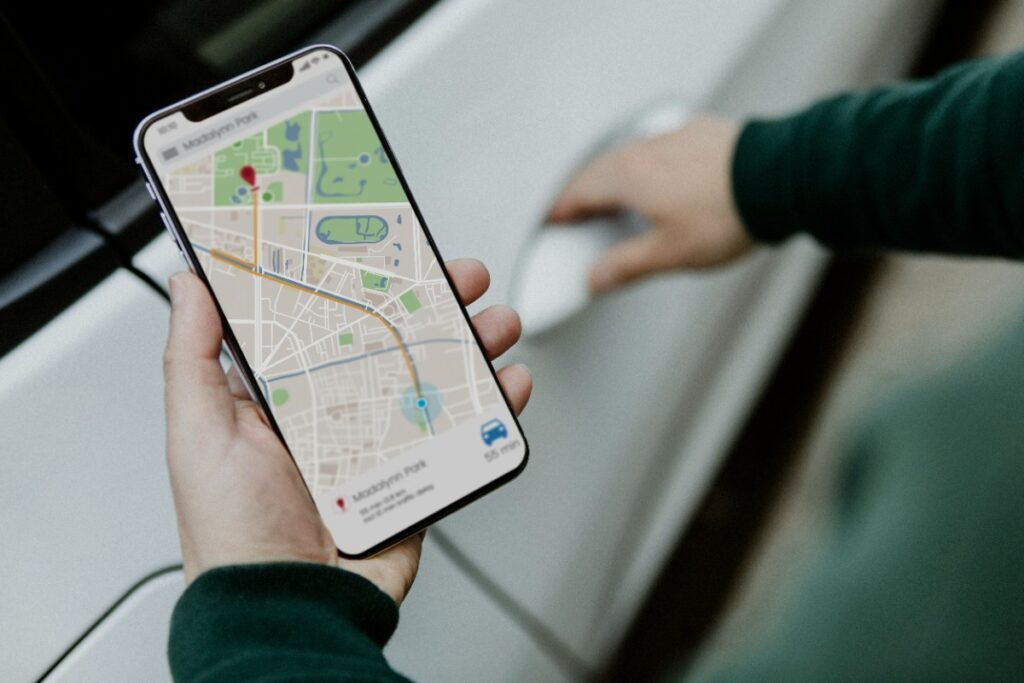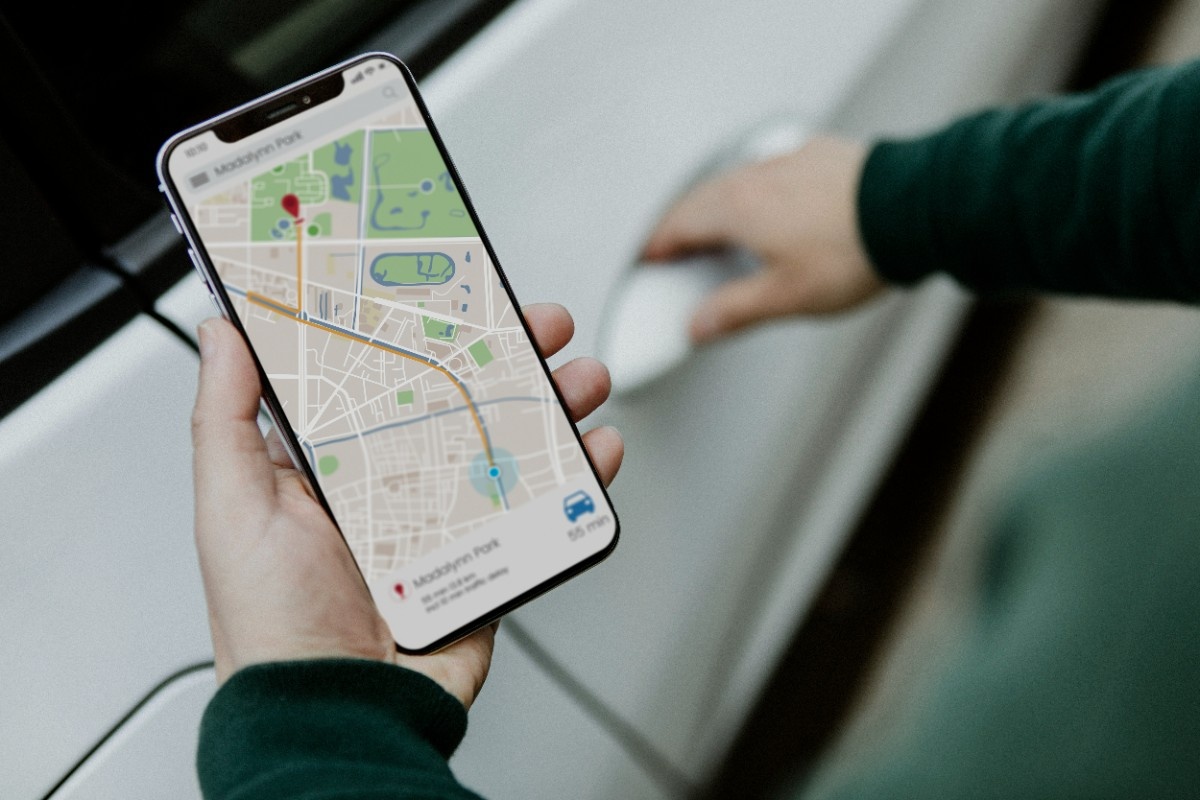When potential customers search for businesses like yours, where does your company appear? For most local searches, Google Maps results dominate the top of the page, often pushing traditional website listings below the fold. This shift in search behavior has transformed how customers discover and evaluate local businesses, making your Google Maps presence more critical than ever before.
Local search engine optimization extends far beyond simply claiming a business listing. Success requires coordinating accurate information across dozens of platforms, actively managing customer reviews, optimizing visual content, and maintaining technical website elements that signal relevance to search engines. Each component reinforces the others, creating a comprehensive digital footprint that helps search engines confidently connect your business with customers in your area.
This checklist provides a systematic approach to local SEO optimization. Whether you’re just starting to build your local search presence or looking to strengthen an existing strategy, these actionable steps will help you improve visibility, attract more customers, and compete effectively in your market. The businesses that succeed in local search treat optimization as an ongoing commitment rather than a one-time project.

Understanding Local SEO and Google Maps
Local search has fundamentally changed how customers find and choose businesses. When someone searches for services in their area, Google Maps results appear prominently at the top of search results, often before traditional website listings. This prime digital real estate can make the difference between a thriving business and one that struggles to attract local customers.
Local SEO encompasses the strategies and tactics that help your business appear in these location-based searches. Unlike traditional SEO that focuses on ranking nationally or globally, local SEO targets customers in your specific geographic area. The foundation of effective local SEO rests on three interconnected elements: your Google Business Profile, consistent business information across the web, and genuine customer engagement.
Many business owners underestimate the complexity of local search optimization. They claim their Google Business Profile and assume the work is complete. However, Google’s algorithms evaluate hundreds of factors when determining which businesses to display in local search results. The businesses that appear at the top consistently maintain accurate information, engage with customers, and build comprehensive digital footprints across multiple platforms.
The Business Impact of Local Search
Research shows that 76% of people who search for something nearby on their smartphone visit a related business within 24 hours. Furthermore, 28% of those searches result in a purchase. These statistics reveal why local SEO deserves serious attention from any business serving a geographic market.
When your business appears in the Google Maps section of search results, you gain immediate credibility. Customers see your location, hours, phone number, reviews, and photos before they ever visit your website. This information helps them make quick decisions about whether to contact you, visit your location, or continue searching for alternatives.
Businesses that neglect local SEO face real consequences:
- Incorrect hours: Lead to frustrated customers arriving at closed locations
- Wrong phone numbers: Result in missed calls and lost opportunities
- Inconsistent business names: Confuse potential customers across different platforms
- Incomplete information: Signal to Google that your business data may not be trustworthy
Each of these issues directly impacts your bottom line by preventing customers from reaching you when they’re ready to make a purchase decision.
Setting Up Your Google Business Profile Foundation
Your Google Business Profile serves as the cornerstone of your local SEO strategy. This free tool from Google controls how your business appears in Google Search and Google Maps. A complete, accurate profile significantly increases your visibility in local search results and provides potential customers with the information they need to choose your business.
Claiming and Verifying Your Business
The first step requires claiming your business listing if you haven’t already done so. Visit the Google Business Profile website and search for your business name. If a listing already exists, you’ll need to claim ownership. If no listing exists, you can create a new one by providing basic business information.
Google requires verification to ensure that only legitimate business owners can manage their listings. The verification process typically involves receiving a postcard with a verification code at your business address, though some businesses may qualify for phone or email verification. This step cannot be skipped, and attempting to create duplicate listings or manipulate the verification process violates Google’s guidelines and can result in suspension.
Once verified, you gain full control over your business information. You can update details, respond to reviews, post updates, and access insights about how customers find and interact with your listing. This access represents valuable control over a critical component of your digital presence.
Completing Essential Business Information
Google evaluates profile completeness as a ranking factor. Businesses with fully completed profiles tend to rank higher than those with sparse information. Every field in your Google Business Profile serves a purpose and should be completed accurately.
Essential fields that require your attention include:
- Business Name: Use your actual business name as it appears on your storefront, website, and legal documents without keyword stuffing
- Business Category: Select one primary category and relevant additional categories that accurately represent your services
- Business Description: Write a compelling 750-character description explaining what your business does and what makes it unique
- Hours of Operation: Maintain accurate hours including regular hours, special hours for holidays, and temporary changes
- Contact Information: Provide a local phone number that connects directly to your business
- Website URL: Include your website to drive traffic from your profile to your site
- Service Areas: Define where you operate to help Google show your business to customers in those locations
Each completed field strengthens your profile’s authority and helps Google understand exactly what your business offers and where you serve customers.
Optimizing Your Service Areas and Location
Businesses with physical locations that customers visit should provide a complete address. Service area businesses that travel to customers, such as plumbers or contractors, should hide their address and instead specify their service areas by city, zip code, or radius.
Be strategic but honest about service areas. Google may penalize businesses that claim service areas they don’t actually serve. At the same time, clearly defining where you operate helps Google show your business to customers in those specific areas. If you serve a 30-mile radius from your location, specify the cities and towns within that radius rather than simply stating “30 miles.”
For businesses with multiple locations, each location requires its own Google Business Profile with unique content. Avoid duplicating descriptions, photos, or posts across locations. Each profile should reflect the specific characteristics, staff, and community involvement of that particular location.

Building Consistency Across Online Directories
Google doesn’t rely solely on your Google Business Profile to understand your business. The search engine scans hundreds of online directories, review sites, and data aggregators to validate your business information. When your business name, address, and phone number appear consistently across these platforms, Google gains confidence in your information’s accuracy. Inconsistencies create confusion and can suppress your local search rankings.
Understanding NAP Consistency
NAP stands for Name, Address, and Phone number. This trio of information must appear identically across every platform where your business is listed. Even minor variations can create problems. “Street” versus “St.” or “Suite 100” versus “#100” may seem insignificant, but Google’s algorithms notice these discrepancies.
Establish a standard format for your NAP information and use it consistently everywhere. If your legal business name is “Smith & Associates LLC,” don’t list it as “Smith and Associates” on some platforms and “Smith & Associates” on others. Choose one format and maintain it rigorously.
Phone numbers present another common inconsistency issue. Some businesses use different phone numbers for tracking purposes across various marketing channels. While tracking has value, using multiple phone numbers in online directories confuses search engines and dilutes your local SEO efforts. Select one primary phone number for directory listings.
Priority Directory Listings
Certain directories carry more weight in Google’s evaluation process. These platforms should receive your immediate attention:
- Apple Maps: Powers Siri searches and reaches millions of iPhone users seeking local businesses
- Bing Places: Serves Microsoft search users and powers voice assistants including Cortana and Alexa
- Facebook Business Page: Functions as both a social platform and a directory for local business information
- Yelp: Dominates review searches in many industries and appears in Google search results
- Better Business Bureau: Provides trust signals and appears in search results for business verification queries
Beyond these major platforms, industry-specific directories matter for your particular business type. Restaurants should claim listings on TripAdvisor, OpenTable, and Zomato. Medical practices need profiles on Healthgrades and Vitals. Contractors benefit from Angie’s List and HomeAdvisor. Identify the directories that matter most in your industry and ensure you maintain accurate profiles on each.
Managing Data Aggregators
Data aggregators collect business information and distribute it to hundreds of smaller directories and apps. Four major aggregators dominate the United States market:
- Acxiom: Distributes business data to major directories and apps
- Infogroup: Powers many business listing databases and local search platforms
- Localeze: Supplies data to GPS systems, mobile apps, and voice assistants
- Factual: Provides location data to thousands of apps and services
Many businesses discover outdated or incorrect information circulating through these aggregator networks. Perhaps a previous owner’s information still appears, or an old address continues to propagate across directories. Correcting information at the aggregator level helps eliminate these persistent inaccuracies.
Some aggregators allow free submissions, while others charge fees or work through partners. The investment in properly managing aggregator data pays dividends in improved local search visibility and reduced time spent chasing down incorrect listings across dozens of individual directories.

Creating and Managing Customer Reviews
Customer reviews represent one of the most influential factors in local search rankings. Google considers both the quantity and quality of reviews when determining which businesses to display prominently. Beyond rankings, reviews directly influence customer decisions, with 93% of consumers reporting that online reviews impact their purchasing choices.
Developing a Review Generation Strategy
Waiting for reviews to arrive organically rarely produces sufficient results. Successful businesses implement systematic approaches to encourage satisfied customers to share their experiences. The key lies in making the review process simple and asking at the right moment.
Timing matters significantly. Request reviews when customer satisfaction peaks—immediately after successful project completion, following a positive interaction, or when customers express appreciation for your service. These moments of high satisfaction generate the most enthusiastic and detailed reviews.
Effective review generation strategies include:
- Direct review links: Create and share a direct link to your Google Business Profile review page
- Email follow-ups: Send automated emails after transactions with simple review requests
- Text message campaigns: Use SMS to request reviews from customers who prefer mobile communication
- QR codes: Place scannable codes on receipts, business cards, or in your physical location
- Staff training: Teach your team to request reviews naturally during positive customer interactions
- Post-service calls: Follow up with customers to ensure satisfaction and request feedback
Ensure your team understands they should never offer incentives, pressure customers, or selectively ask only customers they believe will leave positive reviews. These practices violate platform guidelines and can result in penalties.
Responding to Reviews Professionally
Every review deserves a response, both positive and negative. Responding to reviews demonstrates that you value customer feedback and actively engage with your community. Google recognizes businesses that respond to reviews and may factor this engagement into local search rankings.
For positive reviews, express genuine appreciation and mention specific details from their review. Generic “Thanks for your review” responses miss the opportunity to reinforce customer relationships and show potential customers that you pay attention to feedback. Personal, thoughtful responses demonstrate authentic engagement.
Negative reviews require careful handling:
- Respond promptly: Address concerns within 24-48 hours when possible
- Show empathy: Acknowledge the customer’s frustration or disappointment sincerely
- Take responsibility: Avoid making excuses or deflecting blame
- Offer solutions: Provide contact information to resolve issues offline
- Stay professional: Never argue, attack personally, or respond emotionally
- Learn from feedback: Use negative reviews to identify improvement opportunities
- Follow up privately: Contact customers directly to resolve legitimate complaints
Some negative reviews may violate platform policies, such as fake reviews, spam, or reviews containing prohibited content. You can flag these reviews for evaluation, though platforms maintain strict standards for removal. Focus on generating legitimate positive reviews rather than obsessing over occasional negative feedback.
Monitoring Your Online Reputation
Reviews appear across multiple platforms beyond Google. Customers may leave feedback on Facebook, Yelp, industry-specific sites, or even your website. Monitoring all these channels manually becomes overwhelming quickly, especially for businesses with multiple locations.
Set up alert systems to notify you when new reviews appear. Google Business Profile offers email notifications for new reviews. Many reputation management tools consolidate reviews from multiple platforms into a single dashboard, allowing you to monitor and respond efficiently.
Review velocity matters alongside overall rating. Businesses that generate steady streams of new reviews signal ongoing customer satisfaction and active business operations. A five-star rating based on three reviews from two years ago carries less weight than a 4.5-star rating with fifty reviews from the past six months.

Optimizing Visual Content for Local Search
Visual content significantly impacts how customers perceive your business and influences their decision to contact you or visit your location. Google Business Profiles with photos receive 42% more requests for directions and 35% more clicks through to websites than profiles without photos. Quality visual content differentiates your business from competitors and provides customers with confidence about what to expect.
Types of Photos That Drive Engagement
Different photo types serve distinct purposes in your Google Business Profile. Google categorizes photos to help customers find relevant images quickly, and maintaining variety across these categories improves your profile’s completeness and appeal.
- Exterior Photos: Show customers what to look for when visiting your location, including street view and parking areas
- Interior Photos: Provide a sense of your space, atmosphere, and professionalism with clean, well-lit images
- Product Photos: Display your products or completed work to help customers understand your offerings
- Team Photos: Introduce your staff and humanize your business for potential customers
- At Work Photos: Show your team in action demonstrating expertise and professionalism
Upload photos regularly to keep your profile fresh. Google prioritizes recently added content, and frequent photo uploads signal an active, engaged business. Aim to add new photos at least monthly, showcasing seasonal changes, new products, team updates, or completed projects.
Photo Quality Standards
Photo quality directly affects customer perception and engagement. Blurry, dark, or poorly composed photos harm your professional image and may discourage potential customers. Invest in quality photography, either through professional services or by following basic photography principles.
Technical requirements and best practices include:
- Natural lighting: Photograph during daylight hours or with adequate artificial lighting
- File format: Use JPG or PNG format for best compatibility
- File size: Keep files between 10 KB and 5 MB
- Resolution: Use at least 720 x 540 pixels, with higher resolution preferred
- Composition: Frame shots carefully to highlight key features
- Authenticity: Never use stock photography or misrepresent your business
- Consistency: Maintain a cohesive visual style across all photos
- Freshness: Update photos regularly to reflect current offerings and seasonal changes
Google may remove photos that violate guidelines, and customers recognize and distrust inauthentic imagery. Every photo should genuinely represent your location, team, products, or services.
Video Content Opportunities
Video content generates even higher engagement than static photos. Google Business Profiles now support video uploads up to 30 seconds in length. These short videos provide opportunities to showcase your business personality, demonstrate products or services, or give virtual tours of your location.
Keep videos concise and focused. Thirty seconds allows enough time to highlight a key aspect of your business without losing viewer attention. Consider creating videos that showcase your workspace, demonstrate a service, introduce team members, or explain what makes your business unique.
Ensure videos are well-lit, stable, and have clear audio if narration is included. Horizontal orientation works best for most applications. Like photos, videos should authentically represent your business without excessive editing or filters that create unrealistic expectations.
Leveraging Google Business Profile Features
Google continuously adds features to Business Profiles that help businesses engage with customers and stand out in search results. Taking advantage of these features demonstrates to Google that you actively manage your profile, which can positively influence your local search rankings.
Posts and Updates
Google Posts allow you to share timely information directly in your Business Profile. These posts appear in search results and on Google Maps, giving you a way to communicate promotions, events, updates, or general news to potential customers before they even visit your website.
Posts remain visible for seven days, after which they move to an archived section. To maintain an active profile, publish new posts weekly. This regular activity signals to Google that your business is operational and engaged with customers.
Available post types include:
- Event posts: Promote upcoming activities with specific dates and times
- Offer posts: Highlight promotions with optional coupon codes and validity periods
- Product posts: Showcase specific items with photos and pricing information
- What’s New posts: Share general business updates or announcements
Each post should include a clear call-to-action such as Learn More, Sign Up, Get Offer, Buy, or Call Now. The call-to-action can link to a specific page on your website, allowing you to drive targeted traffic to relevant content.
Questions and Answers
The Questions and Answers section allows anyone to ask questions about your business, and anyone can answer—including you. This feature provides an opportunity to address common customer questions proactively while controlling the narrative around your business.
Monitor this section regularly, as unanswered questions or incorrect answers from others can mislead potential customers. When you notice a new question, respond promptly with accurate, helpful information. Your responses are marked as coming from the business owner, carrying more weight than answers from other users.
Proactively add questions and answers that address common inquiries:
- Service availability: Do you offer free consultations or emergency services?
- Payment options: What payment methods do you accept?
- Accessibility: Is your location wheelchair accessible?
- Parking: Where can customers park when visiting?
- Scheduling: How far in advance should customers book appointments?
- Service area: What areas do you serve?
Keep answers concise and factual. While this is your opportunity to provide information, avoid using Q&A as a sales pitch. Customers appreciate straightforward answers that help them make informed decisions about contacting your business.
Booking and Messaging Features
Depending on your business type, Google may offer booking or messaging features within your Business Profile. These features reduce friction in the customer journey by allowing people to take action without leaving Google.
Booking integrations connect with scheduling platforms, allowing customers to book appointments directly from your Google Business Profile. If your business relies on appointments, this feature can significantly increase conversion rates by making booking effortless.
Messaging enables customers to send direct messages to your business through Google Search and Maps. You receive and respond to these messages through the Google Business Profile app on your mobile device. Quick response times to messages improve customer satisfaction and may influence local search rankings.
Enable these features only if you can maintain them properly. An enabled messaging feature that goes unanswered frustrates customers and creates negative impressions. Similarly, booking integrations must connect to systems that are regularly maintained with accurate availability.
Technical Considerations for Local SEO
While Google Business Profile and directory listings form the foundation of local SEO, technical elements on your website also influence your local search visibility. These technical factors help search engines understand your business location and relevance to local searches.
Local Schema Markup
Schema markup provides structured data that helps search engines understand your website content. Local business schema specifically tells search engines key information about your business, including name, address, phone number, hours, and geographic coordinates.
Implementing local business schema on your website reinforces the information you’ve provided through Google Business Profile and directories. When search engines find consistent information across multiple sources, they gain confidence in accuracy, which can improve rankings.
Schema implementation requirements include:
- Placement: Add schema to pages containing business information, typically contact and homepage
- Consistency: Ensure structured data matches your NAP information exactly across all platforms
- Completeness: Include all relevant properties such as hours, geographic coordinates, and service area
- Schema types: Use appropriate schema types for your business (LocalBusiness, Restaurant, ProfessionalService, etc.)
- Validation: Test implementation using Google’s Structured Data Testing Tool
- Updates: Keep schema current when business information changes
Multiple schema types may apply to your business. A restaurant might use Restaurant schema in addition to LocalBusiness schema. Professional services might use ProfessionalService schema. Proper implementation helps search engines understand and display your business information accurately.
Location Pages for Multi-Location Businesses
Businesses with multiple locations face unique challenges in local SEO. Each location needs its own optimized presence both in Google Business Profile and on your website. Creating dedicated location pages for each business address provides this necessary optimization.
Each location page should contain unique content about that specific location. Include the full address, phone number, hours, driving directions, parking information, and details about the team or services specific to that location. Embed a Google Map showing the exact location.
Avoid template-based content that simply swaps out city names while keeping everything else identical. Google recognizes this approach and may not rank these pages well. Instead, create genuinely unique content that reflects the specific characteristics, community involvement, and offerings of each location.
Include customer testimonials specific to each location, information about nearby landmarks or neighborhoods, and any location-specific services or specialties. This authentic, localized content helps each location rank for searches in its specific area.
Mobile Optimization Requirements
Local searches occur predominantly on mobile devices. People searching for “restaurants near me” or “emergency plumber” typically need immediate information and want to take quick action. Your website must deliver seamless mobile experiences to capitalize on this local search traffic.
Mobile optimization requirements extend beyond responsive design:
- Page speed: Optimize loading times for users on slower mobile connections
- Image optimization: Compress images without sacrificing visual quality
- Click-to-call: Make phone numbers tappable for instant calling
- Form functionality: Ensure forms work smoothly on touch screens
- Button sizing: Make buttons large enough for easy tapping
- Text readability: Use appropriate font sizes without requiring zooming
- Navigation ease: Simplify menus for small screens
- Contact prominence: Display contact information prominently on every page
Test your website on actual mobile devices, not just desktop browsers with reduced screen sizes. Real-world testing reveals issues that simulated testing might miss. Google’s mobile-first indexing means the search engine primarily uses the mobile version of your website for ranking purposes.

Measuring and Improving Local SEO Performance
Local SEO is not a one-time project but an ongoing process requiring regular monitoring, analysis, and adjustment. Understanding how to measure performance and interpret data allows you to make informed decisions about where to focus improvement efforts.
Google Business Profile Insights
Google Business Profile provides built-in insights showing how customers find and interact with your listing. These metrics reveal which aspects of your local SEO strategy are working and where opportunities exist for improvement.
Search query data shows the exact terms customers used to find your business. This information helps you understand how people describe your business and services, which can inform your keyword strategy across all platforms. You may discover that customers use different terminology than you expected.
Key metrics to monitor include:
- Search queries: Terms customers used to find your listing
- Direction requests: Number of people who requested directions to your location
- Phone calls: Calls made directly from your listing
- Website clicks: Visitors who clicked through to your website
- Photo views: Engagement with your visual content
- Discovery method: Whether customers found you through direct search or discovery
- Competitor comparison: How your performance compares to similar businesses
Changes in these metrics over time indicate whether your optimization efforts are generating increased engagement. Compare your performance to competitors using the benchmark data Google provides to identify areas where you’re underperforming relative to your market.
Tracking Local Search Rankings
Monitor where your business appears in local search results for your most important keywords. Local rankings can vary significantly based on the searcher’s location, so tracking should account for this geographic variability.
Use rank tracking tools designed for local SEO that can check rankings from specific locations. Manual checking provides limited value since your results may differ from what customers in other parts of your service area see. Automated tools provide more comprehensive and accurate ranking data.
Track rankings for both your primary keywords and long-tail variations. While “plumber” might be highly competitive, “emergency plumber open now” or “residential plumber in [neighborhood]” may present more realistic ranking opportunities. Focus on keywords that align with your actual services and customer search behavior.
Rankings fluctuate naturally, so look for trends over time rather than obsessing over daily changes. A gradual upward trend indicates your optimization efforts are working. Sudden drops may signal technical issues, increased competition, or algorithm updates requiring investigation.
Analyzing Website Traffic from Local Search
Google Analytics reveals how much traffic your website receives from local search and how these visitors behave. Set up geographic reporting to understand which areas generate the most traffic and whether this aligns with your target service areas.
Create custom segments for traffic from your target cities or zip codes. Analyze this local traffic separately from your overall website metrics. Local visitors may behave differently than visitors from outside your area, and understanding these patterns helps optimize your website for local customer needs.
Important metrics for local traffic analysis:
- Traffic volume: Total visitors from your service areas
- Conversion rates: Percentage of local visitors who complete desired actions
- Bounce rates: Visitors who leave immediately without engaging
- Time on site: How long local visitors spend exploring your content
- Pages per session: Number of pages viewed during each visit
- Goal completions: Form submissions, phone calls, or bookings from local traffic
- Geographic distribution: Which specific areas generate the most valuable traffic
- Device usage: Mobile versus desktop traffic patterns
The ultimate goal of local SEO is not just visibility but customer acquisition. Measuring conversion rates from local search traffic reveals whether your visibility translates into actual business opportunities.
Common Local SEO Challenges and Solutions
Even businesses following local SEO best practices encounter obstacles. Understanding common challenges and their solutions helps you address issues quickly and maintain strong local search presence.
Dealing with Google Business Profile Suspensions
Google suspends Business Profiles that violate guidelines, even when violations are unintentional. Common causes include address issues, prohibited business types, verification problems, or suspected spam. Suspensions remove your business from Google Maps and local search results, making resolution urgent.
If your profile is suspended, review Google’s Business Profile guidelines carefully to identify the possible violation. Submit a reinstatement request through Google Business Profile, clearly explaining how you’ve addressed the issue and providing documentation proving your business legitimacy.
Steps to address suspensions:
- Identify the violation: Review Google’s guidelines to understand what triggered the suspension
- Gather documentation: Collect business licenses, utility bills, or other proof of legitimacy
- Submit reinstatement request: Clearly explain how you’ve corrected the issue
- Maintain other platforms: Keep presence strong on Bing, Apple Maps, and directories during suspension
- Be patient: Reinstatement can take weeks or months
Prevention is far easier than recovery. Follow Google’s guidelines exactly, avoid keyword stuffing in your business name, use only legitimate business addresses, and never create duplicate listings or engage in review manipulation.
Managing Duplicate Listings
Duplicate listings confuse customers and dilute your local SEO efforts. They occur when multiple profiles exist for the same business, often due to previous owners, name changes, or incorrect information submitted by third parties.
When you discover duplicate listings, don’t simply create a new profile. Instead, claim ownership of the correct profile and request removal of the duplicates through Google Business Profile. Provide evidence that you’re the legitimate business owner and explain why the duplicates should be removed.
Third-party data sources sometimes create duplicate listings that reappear even after deletion. Track down the source of these duplicates by checking major data aggregators. Correcting information at the source prevents duplicate listings from continuously regenerating.
For businesses that have changed names or locations, properly close old listings rather than abandoning them. Mark them as permanently closed and redirect any existing authority to your current listing. This approach preserves your business history while preventing confusion.
Competing with Established Businesses
New businesses or those just beginning local SEO efforts often face established competitors with years of reviews, consistent citations, and strong local rankings. Competing requires patience and strategic focus on areas where you can gain ground.
Strategies for competing with established businesses:
- Complete every profile field: Many established businesses have incomplete profiles providing opportunities
- Generate fresh reviews: Recent reviews carry significant weight even with lower total counts
- Target specific areas: Focus on neighborhoods or segments where competition is less intense
- Create superior content: Provide more helpful, detailed information than competitors
- Optimize for long-tail keywords: Compete on specific, less competitive search terms
- Maintain consistency: Update NAP information across all platforms accurately
- Engage actively: Respond to all reviews and post regular updates
- Build local authority: Participate in community events and earn local media mentions
Rather than trying to rank for broad terms across your entire service area immediately, establish strong presence in specific geographic pockets, then expand gradually as your authority grows.
Integrating Local SEO with Overall Digital Strategy
Local SEO doesn’t exist in isolation. The most successful businesses integrate local search optimization with their broader digital marketing strategies, creating synergies that amplify results across all channels.
Coordinating with Paid Advertising
Google Ads local campaigns can complement organic local SEO efforts by providing immediate visibility while your organic rankings develop. These campaigns use your Google Business Profile information and appear across Google Search, Maps, YouTube, and the Display Network.
Analyze which keywords generate the best organic results and which require paid support. You might rank well organically for some services while needing paid advertising to compete for others. This strategic combination maximizes visibility while managing advertising costs effectively.
Ways to coordinate organic and paid efforts:
- Fill visibility gaps: Use paid ads for keywords where organic rankings are weak
- Test keyword performance: Validate keyword value with paid campaigns before pursuing organically
- Leverage seasonal opportunities: Boost visibility during peak demand periods
- Maintain consistency: Ensure messaging aligns between organic listings and paid ads
- Share insights: Use organic data to inform paid strategy and vice versa
Ensure consistency between your organic listings and paid advertisements. Inconsistent messaging, different phone numbers, or conflicting information confuses customers and wastes advertising investment.
Leveraging Social Media for Local Presence
Social media platforms serve both social networking and local search functions. Facebook, Instagram, and LinkedIn all include business profiles with location information, reviews, and contact details. These profiles appear in their respective platform searches and sometimes in Google results.
Maintain NAP consistency across all social profiles. Use the same business name, address, and phone number that appears in your Google Business Profile and directories. This consistency reinforces your local presence across the entire digital ecosystem.
Engage with local community content on social media. Participate in local business groups, comment on community events, and share content relevant to your geographic area. This activity builds local connections while signaling to platforms that your business is genuinely engaged with your community.
User-generated content from customers often includes location tags and mentions of your business. Encourage customers to share their experiences and tag your business in their posts. This authentic content extends your local reach and provides social proof that complements your review profiles.
Creating Location-Specific Content
Content marketing and local SEO intersect through location-specific content that serves both search optimization and customer education. Blog posts, guides, and resources focused on local topics help you rank for local keywords while providing genuine value to your community.
Write about local events, partnerships, community involvement, and area-specific expertise. A roofing company might create content about weather patterns specific to their region and how they affect roofing needs. A restaurant might write about sourcing ingredients from local farms or participating in community events.
Effective local content topics include:
- Neighborhood guides: Comprehensive information about areas you serve
- Local event coverage: Participation in or sponsorship of community activities
- Area-specific solutions: How your services address local challenges or conditions
- Customer success stories: Case studies from local clients with specific locations mentioned
- Local partnerships: Collaborations with other area businesses
- Community resources: Helpful guides or information for local residents
- Regional expertise: Industry knowledge specific to your geographic area
Update content regularly to keep it current and relevant. Local information changes frequently—new businesses open, events occur, and community dynamics shift. Fresh, updated content maintains relevance with search engines and usefulness to readers.
Future Considerations for Local Search
Local search continues to evolve with new technologies and changing user behaviors. Understanding emerging trends helps businesses prepare for the future while building sustainable local search strategies.
Voice Search and Digital Assistants
Voice search changes how people find local businesses. Voice queries tend to be longer and more conversational than typed searches. “Where’s the nearest coffee shop” becomes “Hey Siri, where can I get coffee near me right now.” Optimizing for voice search requires understanding these natural language patterns.
Digital assistants pull business information from various sources including Google, Apple Maps, Bing, and specialized data providers. Ensuring your business information appears accurately across all these platforms becomes even more critical as voice search adoption grows. Inconsistent information may result in assistants providing incorrect details or skipping your business entirely.
Voice search optimization strategies:
- Conversational keywords: Optimize for natural language questions people actually ask
- FAQ content: Create comprehensive question-and-answer sections on your website
- Structured data: Implement schema markup so assistants can extract information accurately
- Complete profiles: Fill out all fields on every platform digital assistants use
- Local context: Include location-specific information in your content
Focus on question-based content that matches voice search patterns. People asking questions through voice search expect direct answers. Creating FAQ sections, how-to content, and informational resources positions your business to capture voice search traffic.
Artificial Intelligence and Local Search
Artificial intelligence increasingly influences how search engines understand and rank local businesses. Machine learning algorithms analyze patterns in user behavior, review content, business information quality, and countless other factors to determine which businesses best match specific search queries.
These AI systems reward businesses that consistently demonstrate quality and relevance. Rather than trying to manipulate specific ranking factors, focus on genuine quality across all aspects of your local presence. Accurate information, satisfied customers, regular engagement, and helpful content align with what AI systems ultimately try to identify and promote.
Search engines are becoming better at understanding context and intent. A search for “best pizza” might show different results depending on whether it’s lunchtime or late evening, whether you’re searching from home or while traveling, and what your previous search behavior suggests about your preferences. Businesses can’t control all these factors, but maintaining strong, consistent presence increases the likelihood of appearing when contextually appropriate.
AI-powered personalization means that no two users see identical search results. While this creates challenges for measuring rankings, it emphasizes the importance of being genuinely relevant and valuable to your target customers. The businesses that win in AI-driven search are those that authentically serve their customers’ needs.
Evolving User Expectations
Customer expectations for local business information continue to rise. Real-time information about wait times, current inventory, or immediate availability increasingly influences customer decisions. Businesses that can provide this level of up-to-date information gain competitive advantages.
Emerging trends shaping local search:
- Visual search: Users photograph products to find local stores carrying those items
- Real-time information: Customers expect current wait times, inventory levels, and availability
- Seamless integration: Online research should accurately reflect offline reality
- Instant gratification: Users want immediate answers and quick action options
- Personalized results: Search engines deliver increasingly customized results based on individual behavior
- Multi-platform presence: Customers research across multiple devices and platforms before deciding
Integration between online and offline experiences becomes increasingly seamless. Customers expect to research online, verify current information, see real-time availability, and then visit or contact businesses with confidence that the digital information accurately reflects reality. Any disconnect between digital presence and physical reality damages trust and loses customers.
The businesses that thrive in evolving local search environments are those that commit to accuracy, responsiveness, and genuine customer service. Technology and platforms change, but the fundamental principle remains: businesses that authentically serve their communities and maintain trustworthy digital presences will continue to succeed in local search.
Taking Action on Your Local SEO Checklist
Local SEO success requires systematic implementation of multiple interconnected strategies. Rather than attempting to address everything simultaneously, prioritize based on your current situation and available resources. The businesses that achieve the best results approach local SEO as an ongoing commitment rather than a one-time project.
Immediate Action Steps
Begin by claiming and verifying your Google Business Profile if you haven’t already. Complete every field in your profile with accurate, detailed information. Add high-quality photos that showcase your business, location, and team. These foundational steps provide immediate visibility improvements and require no specialized technical knowledge.
Priority actions to take today:
- Claim Google Business Profile: Verify ownership and complete all profile fields
- Audit current listings: Search for your business across major platforms and document inconsistencies
- Standardize NAP format: Create master format for consistent use everywhere
- Add quality photos: Upload at least five high-quality images showing your business
- Request initial reviews: Identify satisfied customers and ask for feedback
- Respond to existing reviews: Show engagement by replying to current reviews
Audit your current online presence by searching for your business name across Google, Bing, Apple Maps, and major directories. Document every listing you find, noting inconsistencies in your business name, address, phone number, or other information.
Ongoing Maintenance Requirements
Schedule weekly time for Google Business Profile maintenance. Add new photos, publish posts about current promotions or updates, respond to new reviews and questions, and monitor insights for changes in performance. This regular attention keeps your profile active and engaging.
Monitor your business listings across major platforms monthly. Check for new reviews requiring responses, verify that information remains accurate, and look for new listings that may have appeared. Address any inconsistencies quickly before they affect your search rankings.
Create and publish location-focused content regularly. Whether through blog posts, social media updates, or website additions, consistent content creation that serves your local audience builds authority and generates ongoing search visibility. Quality matters more than quantity—one excellent, comprehensive piece of content provides more value than several superficial posts.
When to Seek Professional Help
Local SEO involves numerous technical elements, consistent maintenance requirements, and specialized knowledge. Many businesses find that professional management delivers better results than attempting to handle everything internally, particularly when considering the time investment required.
Professional local SEO services provide expertise in managing complex citation networks, implementing technical optimizations, coordinating review management, and monitoring performance across multiple platforms. They stay current with algorithm changes, platform updates, and emerging best practices that individual business owners may not have time to track.
Signs you may benefit from professional help:
- Limited time: You can’t dedicate weekly time to local SEO maintenance
- Technical complexity: Schema markup and website optimization feel overwhelming
- Competitive market: You’re competing against businesses with strong local presence
- Multiple locations: Managing several profiles and location pages becomes unmanageable
- Inconsistent results: Your DIY efforts haven’t improved visibility
- Revenue dependence: Local search visibility directly impacts your business income
- Suspended profile: You’re dealing with Google Business Profile suspension issues
Look for providers who offer comprehensive approaches addressing all aspects of local SEO rather than focusing on single elements. Effective local search optimization requires coordinated efforts across Google Business Profile management, directory listings, review management, website optimization, and content creation.
Conclusion
Local SEO represents an essential component of modern business marketing. The customers searching for your services are actively looking to make purchases or engage services immediately. Appearing prominently in these local searches connects your business with high-intent customers at the exact moment they need your services.
Success in local search requires attention to detail, consistency across platforms, genuine customer engagement, and ongoing maintenance. While the technical elements matter, the businesses that excel in local SEO are ultimately those that deliver genuine value to their communities and maintain trustworthy, accurate digital presences.
The checklist provided in this article covers the essential elements of local SEO optimization. Implementation doesn’t require completing everything immediately. Start with foundational elements like Google Business Profile optimization and NAP consistency, then progressively add reviews, content, and technical optimizations. Consistent effort over time produces better results than sporadic intensive campaigns.
As local search continues to evolve with new technologies and changing user behaviors, the core principles remain constant. Accurate information, satisfied customers, genuine engagement, and helpful content will always matter regardless of which platforms dominate or how algorithms change. Build your local SEO strategy on these lasting foundations, and your business will maintain strong local search visibility well into the future.







